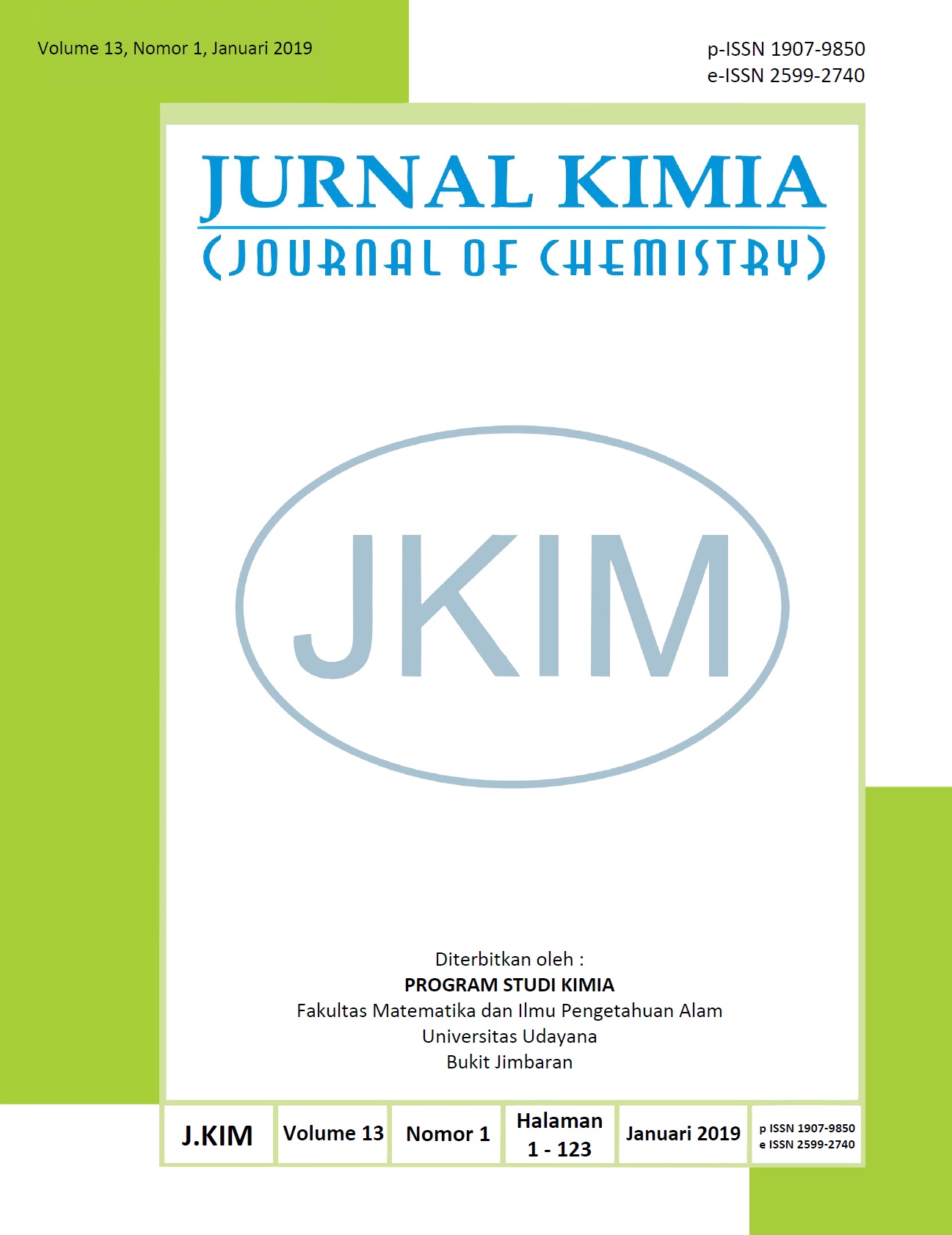STUDI ADSORPSI ZAT WARNA NAPHTHOL YELLOW S PADA LIMBAH CAIR MENGGUNAKAN KARBON AKTIF DARI AMPAS TEBU
Abstract
The aim of this research is to get activated carbon from sugarcane bagasse with high adsorption capacity to Naphthol Yellow S and to know factors influencing the adsorption capacity. Activated carbon is prepared by incomplete combustion of sugracane bagasse. The resulting carbon is activated with H2SO4 with concentration variation of 0.5; 1.0; 1.5 and 2.0 M and is continued by calcination at 400 °C. The measurement of the surface area of ??activated carbon by the methylene blue method indicates that the activation process successfully extends the surface area of carbon from 31.87 m2/g before activation to 66-72 m2/g after activation. Activated carbon with concentration of 2.0 M H2SO4 showed the highest surface area of ??71.85 m2/g, however, the best adsorption was shown by activated carbon with a concentration of 0.5 M H2SO4 with the adsorption capacity of 83.93%. The adsorption test showed that the best amount of adsorbent was 0.2 g with contact time for 30 minutes. Prolonged contact time can decrease the amount of Naphthol Yellow S adsorbed. The best adsorption test result was shown by sample with activator concentration of 0,5 M, mass of 0,2 g and contact time of 30 min with adsorption capacity 95,81% or amount of dye adsorbed equal to 143,72 mg/g. The adsorption study also showed that the entire Naphthol Yellow S adsorption process followed the Langmuir isothemal adsorption model. Qualitative testing of real batik waste indicates that activated carbon can reduce the dyes waste containing Naphthol Yellow Sexhibited by the color of batik waste which is more faded.
Downloads

This work is licensed under a Creative Commons Attribution 4.0 International License






